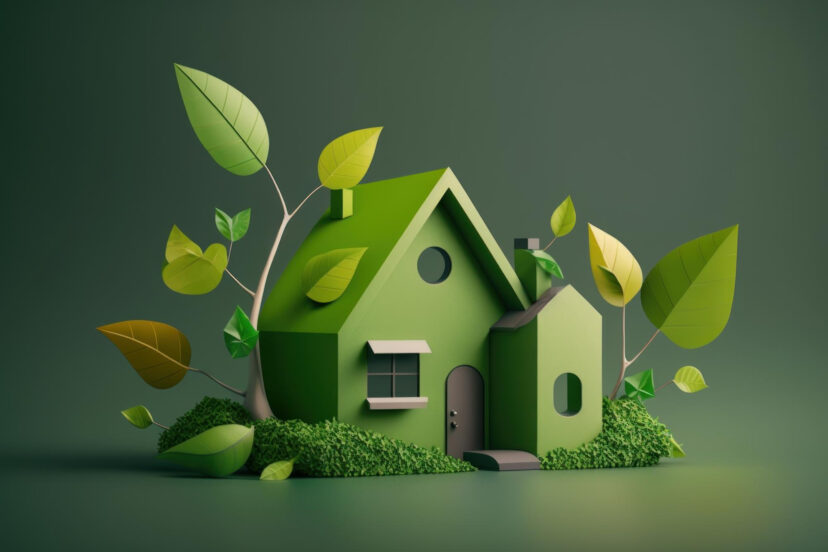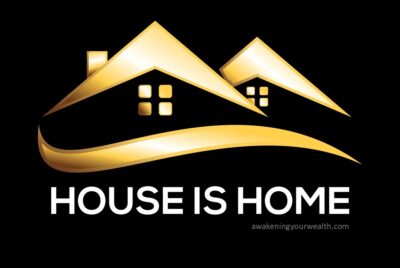Rise of Eco-Friendly Homes
Imagine stepping into a home where every feature, from the sun-drenched windows to the smart thermostat on the wall, works in harmony to create not just a living space, but a sustainable sanctuary. This isn’t a scene from a distant future – it’s happening right now as we witness the remarkable rise of eco-friendly homes across the globe. As our planet faces unprecedented environmental challenges, the real estate industry is undergoing a profound transformation, reimagining how we build, live, and interact with our living spaces.
A Green Revolution in Housing
The rise of eco-friendly homes represents more than just a trending hashtag or a marketing buzzword. It’s a fundamental shift in how we approach residential construction and design, driven by a growing awareness of our environmental impact and the urgent need for sustainable solutions. Homeowners, developers, and architects are increasingly recognizing that every architectural decision has the potential to either contribute to or help mitigate environmental challenges.
The Power of Green Building Certifications
When Sarah and Mike Johnson decided to build their dream home in Colorado, they faced an overwhelming array of choices. Like many modern homeowners, they turned to green building certifications as their compass. These certifications, particularly LEED (Leadership in Energy and Environmental Design) and ENERGY STAR, have become the gold standard in sustainable construction, offering clear guidelines and benchmarks for creating truly eco-friendly homes.
“We wanted to make sure our home wasn’t just marketed as ‘green’ but actually delivered on environmental promises,” Sarah explains. Their LEED-certified home now serves as a model for their community, demonstrating how rigorous standards can translate into tangible environmental benefits and long-term cost savings.
Energy-Efficient Design: Where Innovation Meets Sustainability
The cornerstone of eco-friendly homes lies in their innovative approach to energy efficiency. Modern sustainable homes are architectural marvels that work with nature rather than against it. Large, strategically placed windows maximize natural light, reducing the need for artificial lighting during daylight hours. Advanced insulation technologies maintain comfortable temperatures year-round while minimizing energy consumption.
Perhaps the most visible symbol of this energy revolution is the increasing presence of solar panels on residential rooftops. These sleek, modern installations represent more than just energy generation – they’re a statement of commitment to environmental stewardship and energy independence.
Smart Technology: The Brain of Eco-Friendly Homes
In today’s eco-friendly homes, technology serves as an invisible but powerful ally in the quest for sustainability. Smart home systems have evolved far beyond simple programmable thermostats, creating integrated ecosystems that optimize energy use in real-time.
The Digital Revolution in Home Management
Modern eco-friendly homes feature sophisticated energy monitoring systems that provide homeowners with detailed insights into their energy consumption patterns. Smart meters track usage down to individual appliances, while AI-powered systems learn from household habits to suggest optimization strategies. These technologies don’t just save energy – they empower homeowners to make informed decisions about their environmental impact.
Sustainable Real Estate Trends Reshaping Our Communities
The Art of Adaptive Reuse
One of the most exciting trends in sustainable real estate is the creative repurposing of existing structures. In cities across the world, defunct industrial buildings are finding new life as innovative residential spaces. The transformation of the historic Manchester Mills into eco-friendly loft apartments serves as a prime example, preserving architectural heritage while implementing cutting-edge sustainable technologies.
The Promise of Net-Zero Energy Homes
The concept of net-zero energy homes represents the pinnacle of sustainable residential design. These remarkable properties are engineered to produce as much energy as they consume, achieving a perfect balance that points the way toward a carbon-neutral future. While once considered experimental, net-zero homes are increasingly becoming a realistic option for environmentally conscious homeowners.
Building Sustainable Communities
The rise of eco-friendly homes extends beyond individual properties to encompass entire neighborhoods. Forward-thinking developers are creating integrated communities that prioritize sustainability at every level. From shared solar arrays to community composting programs and electric vehicle charging stations, these developments are proving that environmental responsibility and community building go hand in hand.
The Tangible Benefits of Eco-Friendly Living
Environmental Impact: Making a Real Difference
The environmental benefits of eco-friendly homes are substantial and measurable. A typical sustainable home can reduce carbon emissions by 2-3 tons annually compared to conventional construction. When multiplied across thousands of properties, the potential impact on climate change mitigation becomes significant.
Financial Advantages: The Green Premium
While the initial investment in eco-friendly features may be higher, the long-term financial benefits are compelling. Homeowners regularly report utility cost reductions of 30-60% compared to traditional homes. Additionally, studies show that eco-friendly homes often command premium resale values, with certified green properties selling for up to 10% more than conventional homes.
Health and Wellness: The Hidden Benefits
The benefits of eco-friendly homes extend well beyond environmental and financial considerations. These properties are designed with human health in mind, featuring superior indoor air quality, abundant natural light, and connections to outdoor spaces. Residents often report improved sleep, reduced allergies, and enhanced overall well-being.
Navigating Challenges in the Green Housing Revolution
Addressing Cost Barriers
The higher upfront costs of eco-friendly homes remain a significant challenge for many potential buyers. However, innovative financing options are emerging to bridge this gap. Green mortgages and energy-efficient financing programs are making sustainable homes more accessible to a broader range of buyers.
Keeping Pace with Regulations
The regulatory landscape for sustainable construction continues to evolve rapidly. Building codes are becoming increasingly stringent regarding energy efficiency and environmental impact. While these changes present challenges for developers and builders, they’re essential for driving progress toward a more sustainable future.
The Future of Eco-Friendly Homes
Emerging Technologies and Innovations
The future of sustainable housing looks increasingly exciting as new technologies emerge. Developments in energy storage solutions, advanced building materials, and innovative construction techniques promise to make eco-friendly homes even more efficient and accessible.
Integration of Renewable Energy
As renewable energy technology becomes more efficient and affordable, we can expect to see even greater integration of solar, wind, and geothermal systems in residential construction. The goal of energy independence is becoming increasingly achievable for average homeowners.
A Sustainable Future Takes Shape
The rise of eco-friendly homes represents a crucial step toward a more sustainable future. As awareness grows and technology advances, these properties are transitioning from luxury options to mainstream choices. The transformation of the real estate industry toward sustainability is not just about building better homes – it’s about creating a better future for generations to come.
For homeowners, developers, and communities alike, the message is clear: the future of housing is green, and the time to embrace this change is now. As we continue to witness the rise of eco-friendly homes, we’re not just observing a trend – we’re participating in a fundamental shift toward a more sustainable and conscientious way of living.




